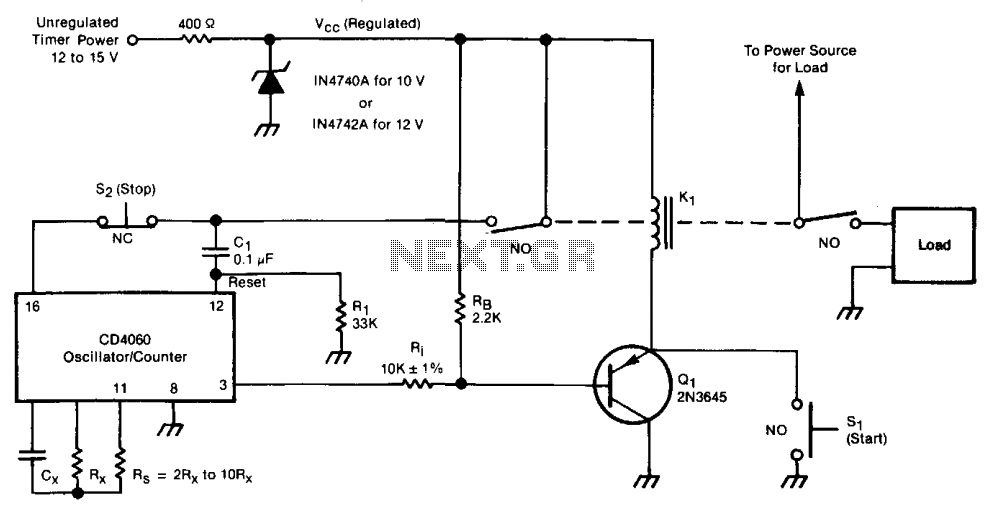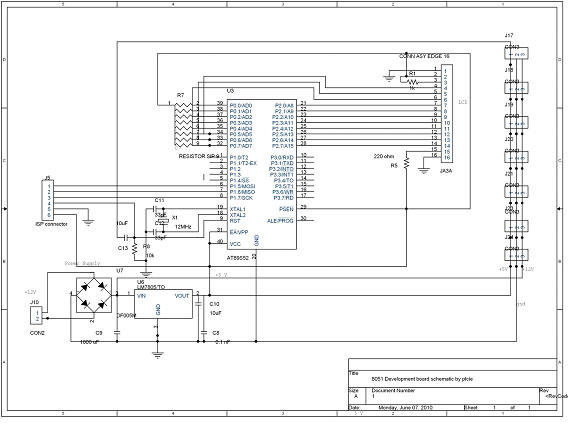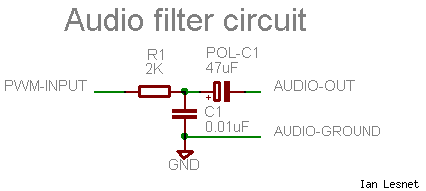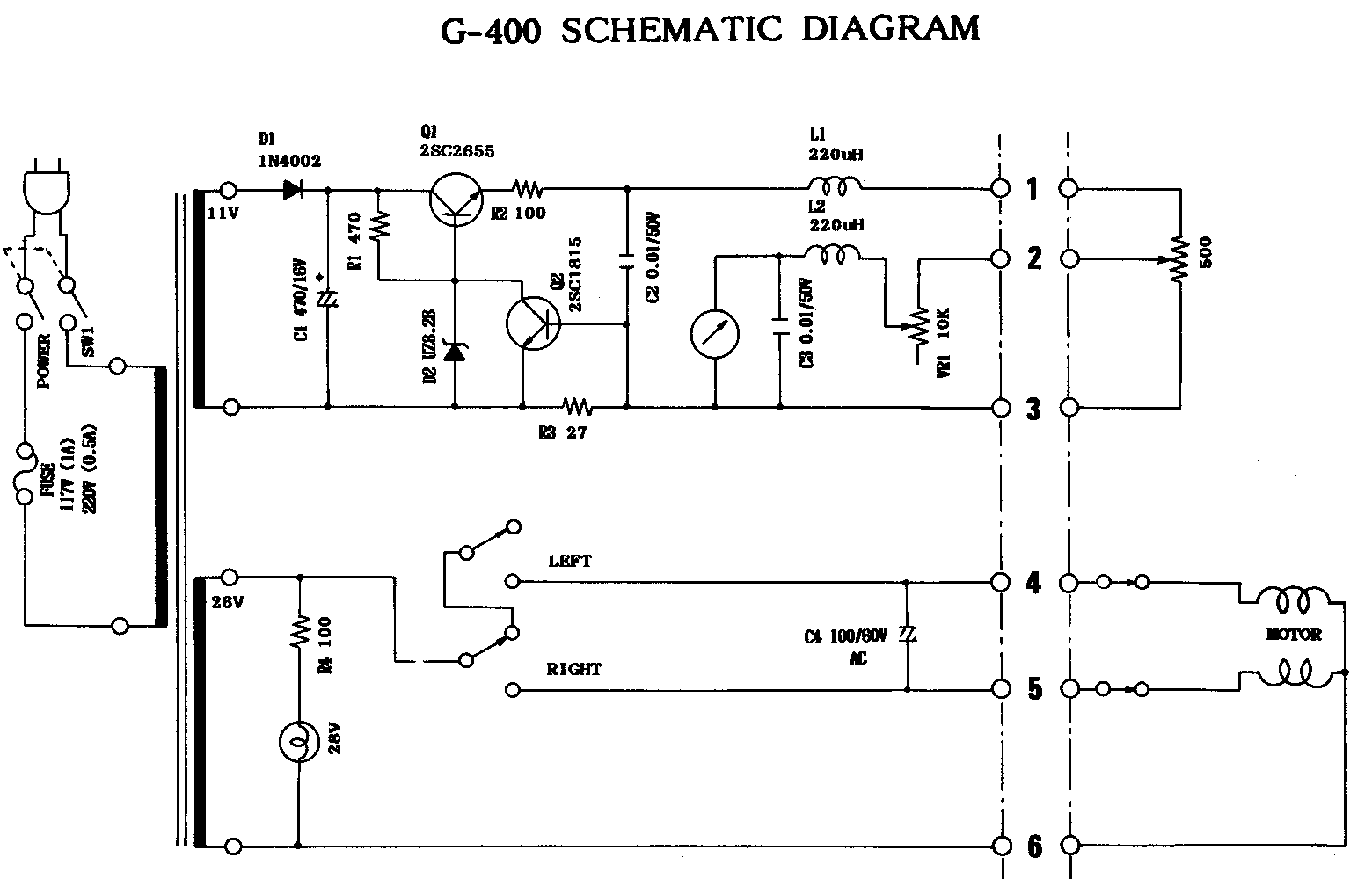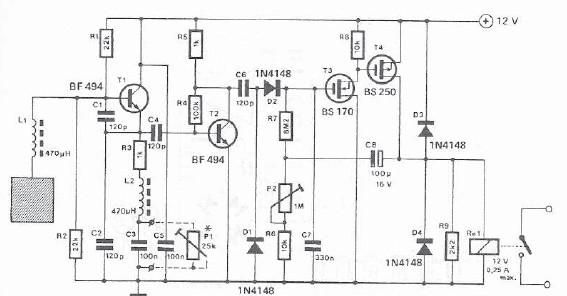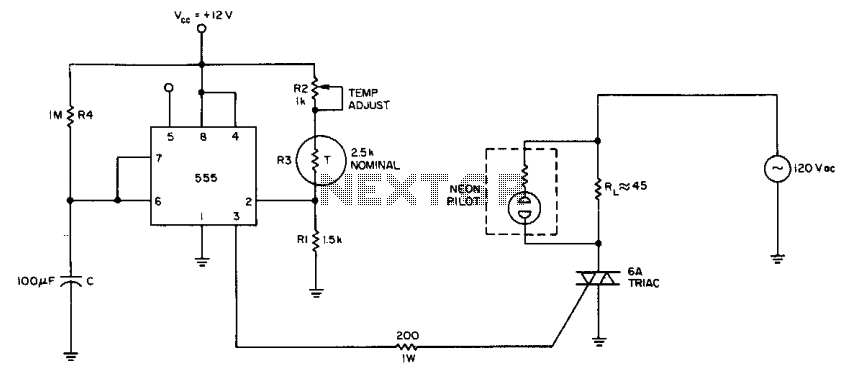
Incandescent Yeonsu electronic controller 1
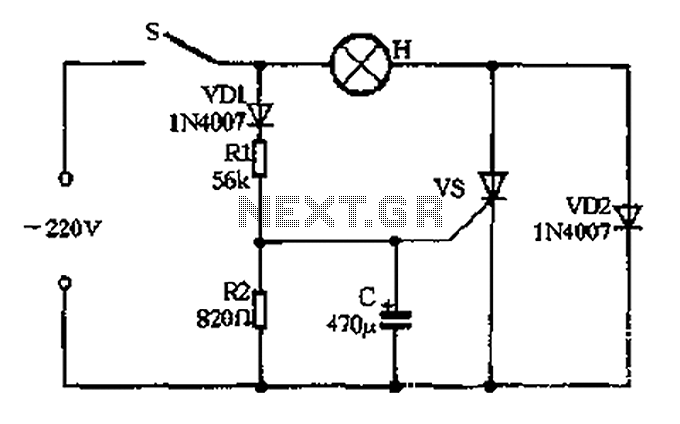
The circuit operates as follows: When the momentary switch S is activated, the voltage across the capacitor cannot change instantly, resulting in zero voltage across the SCR, which does not trigger. Consequently, the voltage cut-off occurs. In this scenario, the current flowing through the lamp H is conducted via diode VD2, providing a half-wave rectified current that preheats the dimly lit bulb. The current impact during this phase is minimal. As the capacitor C charges through diode VD1 and resistor R1, after a delay of approximately 0.6 seconds, the voltage across C rises to the level necessary to trigger the controllable silicon (SCR), allowing it to turn on, which results in the lamp H illuminating normally. The transition from the cold state to normal light is buffered by this 0.6-second delay, thereby extending the lifespan of the lamp.
The described circuit employs a momentary switch (S) to initiate the operation. Upon activation, the switch allows current to flow through the circuit, but due to the inherent properties of the capacitor (C), the voltage across it cannot change instantaneously. This results in the SCR (Silicon Controlled Rectifier) remaining in a non-conducting state initially, preventing any immediate current flow to the lamp (H). The diode (VD2) allows for a half-wave rectified current to flow, which serves to preheat the lamp. This preheating phase is characterized by a low current that does not significantly illuminate the bulb, thus creating a dim light.
As the capacitor charges through the path defined by diode (VD1) and resistor (R1), the voltage across the capacitor gradually increases. After a delay of approximately 0.6 seconds, the voltage across the capacitor reaches a threshold that is sufficient to trigger the SCR. Once the SCR is activated, it allows current to flow freely to the lamp, resulting in full illumination.
This design effectively incorporates a delay mechanism that prevents sudden surges of current to the lamp, which can be detrimental to its lifespan. By allowing the lamp to warm up gradually, the circuit not only enhances the operational life of the bulb but also improves the user experience by avoiding abrupt lighting changes. The use of the half-wave rectification ensures that the lamp receives a controlled amount of power during the initial preheating phase, further contributing to the longevity of the component. Circuit work process is: When the momentary switch S between, since the voltage across the capacitor can not change suddenly, the Pi C zero voltage across the SCR vs no trigger voltage cut-off stop. In this case the current flowing through the lamp H is through diode VD2 half-wave rectified current, the preheating dark light bulb, the impact of current is very small. If the capacitor C via VDI and Rl charge, after a delay of about 0.6s, C rises to reach the voltage across the controllable silicon vs opening level, vs opened, namely normal lamp H lights up.
Since the bulbs from the cold state to the normal light room with 0.6s buffering delay time, so the lamp life has been extended.
The described circuit employs a momentary switch (S) to initiate the operation. Upon activation, the switch allows current to flow through the circuit, but due to the inherent properties of the capacitor (C), the voltage across it cannot change instantaneously. This results in the SCR (Silicon Controlled Rectifier) remaining in a non-conducting state initially, preventing any immediate current flow to the lamp (H). The diode (VD2) allows for a half-wave rectified current to flow, which serves to preheat the lamp. This preheating phase is characterized by a low current that does not significantly illuminate the bulb, thus creating a dim light.
As the capacitor charges through the path defined by diode (VD1) and resistor (R1), the voltage across the capacitor gradually increases. After a delay of approximately 0.6 seconds, the voltage across the capacitor reaches a threshold that is sufficient to trigger the SCR. Once the SCR is activated, it allows current to flow freely to the lamp, resulting in full illumination.
This design effectively incorporates a delay mechanism that prevents sudden surges of current to the lamp, which can be detrimental to its lifespan. By allowing the lamp to warm up gradually, the circuit not only enhances the operational life of the bulb but also improves the user experience by avoiding abrupt lighting changes. The use of the half-wave rectification ensures that the lamp receives a controlled amount of power during the initial preheating phase, further contributing to the longevity of the component. Circuit work process is: When the momentary switch S between, since the voltage across the capacitor can not change suddenly, the Pi C zero voltage across the SCR vs no trigger voltage cut-off stop. In this case the current flowing through the lamp H is through diode VD2 half-wave rectified current, the preheating dark light bulb, the impact of current is very small. If the capacitor C via VDI and Rl charge, after a delay of about 0.6s, C rises to reach the voltage across the controllable silicon vs opening level, vs opened, namely normal lamp H lights up.
Since the bulbs from the cold state to the normal light room with 0.6s buffering delay time, so the lamp life has been extended.
